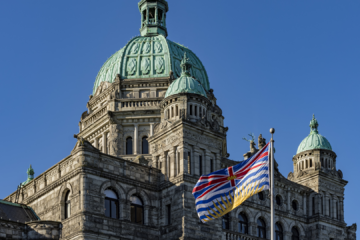CRT Roundup—responsibility for repairs, strata-council composition and meetings, collection of arrears, and tribunal procedure
April 27, 2017
BY Kevin Zakreski
This post is part of a monthly series summarizing the Civil Resolution Tribunal’s strata-property decisions. There have been nine new decisions since the last post.
Responsibility for repairs to strata lot
Rawle v The Owners, Strata Plan NWS 3423, 2017 CRTBC 15, involved a dispute between a strata-lot owner and a strata corporation, which “arose because a fireplace exhaust pipe, also known as a flue, was found to be disconnected in the [strata lot’s] fireplace wall cavity. The owner says the smoke fumes from the fireplace vented into the wall space, causing severe damage.” The tribunal was asked to determine whether “the strata [was] responsible for any of the owner’s replacement costs for his fireplace and the surrounding wall area.”
Analysis of this issue led the tribunal to consider first “whether the wall cavity and the fireplace flue are common property, or as claimed by the [owner], limited common property.” Based on its reading of section 68 of the Strata Property Act, the tribunal determined that these items were common property. Since they were common property, they fell within the strata corporation’s repair-and-maintenance obligations.
Next, the tribunal spelled out the standard that the strata corporation was expected to meet in carrying out these obligations:
The strata is not an insurer. Courts have held that a strata is not held to a standard of perfection. Rather, it is required to act reasonably in its maintenance and repair obligations. If the strata’s contractors fail to carry out work effectively, the strata should not be found negligent if it acted reasonably in the circumstances. The strata has no liability to reimburse an owner for expenses that the owner incurs in carrying out repairs to their strata lot, which are the owner’s responsibility under the bylaws, unless the strata has been negligent in repairing and maintaining common property.
The tribunal found that the damage to the owner’s strata lot couldn’t be attributed to the strata corporation’s negligence. This finding turned to a large extent on the owner’s actions:
The problem with the owner’s approach is that having found the disconnected flue, he did not contact the strata to advise them of the cause until after he had arranged for the work to be done. In doing so, the strata was left with no opportunity to arrange for the flue reconnection themselves. Such an approach is not consistent with the strata’s bylaws. There is insufficient explanation before me as to why the owner could not have contacted the strata before starting the repair and replacement work.
In the result, the owner’s claim was dismissed.
Responsibility to repair and maintain common property: exterior walls and roofs
Oakley v The Owners, Strata Plan VIS 5481, 2017 CRTBC 17, involved a rather unusual strata property. The strata had been developed in four phases, which resulted in seven detached houses. But:
The strata plans registered for each of the 4 phases do not indicate that the strata is a bare land strata. The strata plans registered for each of the 4 phases do not have any notations with respect to the exterior boundaries of the strata lots. The strata plan of each phase depicts each building as a strata lot.
The owner asked the tribunal for an order “that each strata lot owner be responsible for the repair and maintenance of the exterior walls and roofs of their strata lot.” The owner argued such an order was justified by the nature of the strata and its longstanding practice “that to date the owners have repaired and maintained their own houses.”
The tribunal decided that the owner’s arguments couldn’t displace the clear wording of the act.
Section 68 defines the boundaries of a strata lot. Unless otherwise shown on a strata plan, the boundary between a strata lot and the common property is midway between the wall, floor or ceiling that faces the strata lot or common property. It is important to address whether the strata plan shows otherwise. I have reviewed the strata plans. . . . I find that section 68(1) of the SPA applies. The boundary between the strata lot and the common property, which surrounds all the buildings, is midway through the exterior wall of each detached strata building. The strata plan does not show otherwise. I find that the exterior walls and roofs of the strata lot buildings are common property.
Since the exterior walls and roofs are common property, the strata corporation is responsible for their repair and maintenance by virtue of section 72 of the act.
Strata council: composition and meetings
Clayton v Chantler et al, 2017 CRTBC 18, involved a claim by a strata-lot owner against three fellow owners, each of whom serve on the strata property’s council. The gist of the owner’s claim was “the council members, together with a 4th council member, conducted strata business at a strata council meeting without 5 council members present, when the strata’s bylaws state that there must be a minimum of 5 council members.”
The council members replied that “meeting was urgently required due to the unexpected January 15, 2016 resignation of the council’s president and given the materials that needed to be dealt with for the upcoming annual general meeting.”
The case involved interpretation of the strata corporation’s bylaws, which provided that the “council must have at least 5 and not more than 7 members.” The bylaws also contained a procedure that allowed remaining council members to replace a retiring member and provided that the quorum for a council meeting was “2, if the council consists of 2, 3 or 4 members.”
The tribunal summarized the issue and its resolution as follows:
The question arising here is what should the remaining 4 council members have done, when the strata council president resigned and the council members felt business needed to be done in preparation for the upcoming AGM. I pause to note that the applicant has not really provided an answer. The implication is that her view is that the council meeting should not have occurred until a 5th council member was present, even if that meant the AGM package could not be properly completed and delivered on time. For the reasons that follow, I do not consider such an approach to be reasonable or in the best interests of the strata owners.
***
I find the combined effect of the relevant SPA provisions and the strata’s bylaws is this. Faced with a council member’s resignation, the remaining council may continue to act with less than the minimum 5 members, until an annual or special general meeting is called to fill the vacancies on council.
In the result, the applicant owner’s claims were dismissed.
Collection of arrears of strata fees, special levies, and other charges
The bulk of this month’s decisions concerned collection of outstanding strata fees, special levies, other charges—or, in most of the following cases, some combination of these items. In each of the following five cases, the strata corporation was unopposed, as the owner in arrears didn’t make submissions before the tribunal. The resulting decisions, as the tribunal put it in one case, raised issues that “are relatively straightforward in principle” but occasionally complicated by “a significant amount of math calculation.”
The Owners, Strata Plan NW 1666 v Logan, 2017 CRTBC 13, The Owners, Strata Plan NW 1666 v Parsabad, 2017 CRTBC 14, The Owners, Strata Plan NW 1666 v William et al, 2017 CRTBC 16, each involved the same strata corporation seeking to collect arrears of strata fees and special-levy funds needed in connection with a re-piping project.
The Owners, Strata Plan LMS 921 v Otchere, 2017 CRTBC 20, concerned “a debt claim in a default judgment application where liability is assumed.” The Owners, Strata Plan NW 1512 v Yang, 2017 CRTBC 21, concerned amounts owning to the strata corporation for repairs to the owner’s balcony, proceeding again as “an application for default judgment, in which liability is assumed.”
Tribunal procedure: addition of strata as named respondent
Bourque et al v McKnight, 2017 CRTBC 19, was an interim procedural decision—that is, it wasn’t “the tribunal’s final decision as to the substance or merits of the dispute.”
The tribunal characterized the broader dispute as follows:
The Owners, Strata Plan VIS 2963 (strata) is a strata corporation with only 2 strata lots, Lot A and Lot B. A strata plan with only 2 strata lots is often called a duplex. The applicants, Joseph (Wayne) Bourque and Anne Lloyd, own Lot B. The respondent Wendy McKnight owns Lot A. Given the strata has only 2 council members (an owner from Lot B and the owner from Lot A), the parties here are effectively deadlocked.
“The procedural issue in this decision,” the tribunal noted “is the addition of the strata as a named respondent.” This was sought by the applicant because “[s]ome of the issues arising in the dispute relate to property that the strata, rather than an individual owner, has the obligation to repair and maintain.”
The tribunal decided to add the strata corporation as a named respondent, noting that “because both owners are on the strata council and together make up the entire strata, naming the strata is essentially a formality.”











































